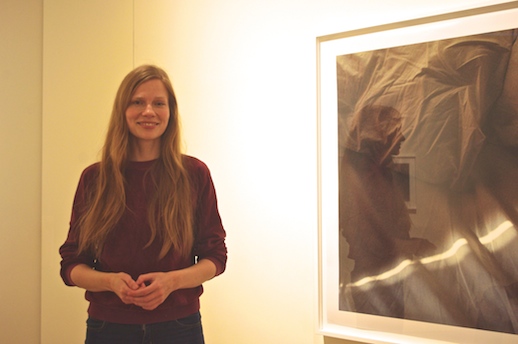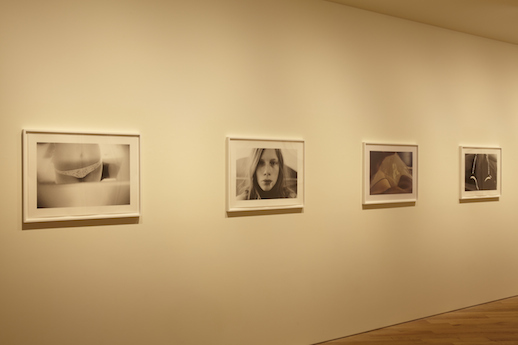The Diary of Lina Scheynius
Born in Sweden and based in London, Lina Scheynius has her first solo exhibition in Japan this winter, “Exhibition 03” at Taka Ishii Gallery Photography / Film. Scheynius began shooting photographs when she was 10 and shot her first professional work in 2008 after some time as a model. TABlog had the opportunity to interview the young photographer during her visit to Tokyo last month.
Shizuka Kitani (SK): To start with, can you tell us about your career? What made you turn from modeling to photography?
Lina Scheynius (LS): I actually didn’t like being a model for many reasons. One was that it made me unhealthy and drove me to become obsessed with my self-image. It was in the period when I worked in modeling that I started taking lots of pictures. I had plenty of time to observe the techniques of the photographers shooting me. I wanted to capture something that felt more real than the fashion shoots. Also, Finally, modeling is not a job you can do forever. By 25, the industry thinks you are old, so most models need a second career. It didn’t happen overnight, but I was lucky enough to switch sides and become a photographer.
SK: Does this shift in your career have any influence on your photography now?
LS: Yes it does a lot. I believe that if I hadn’t worked as a model I wouldn’t have become a photographer. I mean to say, I wanted to react against something super polished and fashionable. I often felt that those things, such as fashion, didn’t have that much heart or truth. I reacted by showing something more raw and intimate.
SK: Why did you choose photography to react against them?
LS: It didn’t have to be, it just happened. I like photography because of its quickness and simplicity. When I want to capture myself, my boyfriend, family and friends, I think the quick, no-fuss character of photography just functions well. It just fits me.

SK: Contrary to your thought that you just mentioned, which could be called a dislike of being model, your works include a number of self-portraits. Will you tell us your intention?
LS: I shoot others too, but I feel like I can’t always lead them to do exactly what I want them to do. With the self-portraits, there is no barrier between the subject and the photographer. I can execute my own idea without having to involve anyone else’s feelings. And I think that is very important for me.
SK: This is your first time to exhibit in Japan. If I’m not wrong, you have been to Japan before, haven’t you?
LS: Yes, I came here in 2000 for modeling work. As a Japanese photography fan, I’m excited to be back.. I feel so welcomed in Japan as well thanks to my Japanese followers.
SK: Who are your favorite Japanese photographers?
LS: I love Nobuyoshi Araki and Rinko Kawauchi. Daido Moriyama is amazing too. Araki has been a big favorite for many years. I like his book “Sentimental Journey,” the series that he took of his wife when they were newly married. I was strongly influenced by how personal, honest and intimate it is. I love his curiosity and the way how he is always looking for new things. That does really come across through his works.
SK: What is the concept of this exhibition? What message do you wish to communicate to your Japanese audience?
LS: I am not the greatest at explaining why Ido certain things as much of it is based on emotion or instinct. This exhibition [at Taka Ishii] is an introduction to my work for the Japanese audience. I have spent the past decade documenting my world. I called the project a diary when I started out, and that is still what it is. The show is mostly self-portraits. Most of them I have taken in private with no one around.
SK: Please tell us what you mean when you say it’s a diary.
Similar to my written diary, there are periods when I write in it every day. It’s not always about current events, but it’s always an important way to vent and process the world around me. In my photographic practice I also have a need to get something on paper, express something, or save something.
SK: Finally, on the subject of your publications. Why do you publish your photobooks in such small editions?
LS: I find the most interesting part of publishing books in the process of creation. The less copies I make, the sooner it will sell out. Then I enjoy making the next one. I really like this progression. I also want those who have purchased one of my books to feel that what they got is something special. Lots of people ask me if I reprint the previous, but I’m not going to. Some of the pictures I’ve included may reappear in other books one day though.

Shizuka Kitani
Shizuka Kitani



